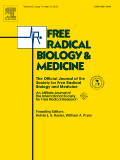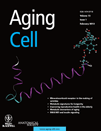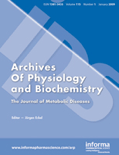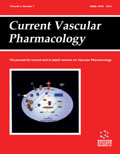
FREE RADICAL BIOLOGY AND MEDICINE
Scope & Guideline
Unraveling the Impact of Free Radicals on Biological Systems
Introduction
Aims and Scopes
- Oxidative Stress Mechanisms:
Research articles delve into the biochemical pathways and mechanisms by which oxidative stress impacts cellular functions, including mitochondrial dysfunction, apoptosis, and inflammation. - Redox Biology in Disease:
The journal publishes studies linking redox biology to various diseases, including cancer, neurodegenerative disorders, cardiovascular diseases, and metabolic syndromes, highlighting oxidative stress as a critical factor. - Therapeutic Interventions:
Papers explore innovative therapeutic strategies targeting redox pathways, including the use of antioxidants, dietary supplements, and novel pharmacological agents to mitigate oxidative damage. - Cellular Signaling Pathways:
Research focuses on how redox signaling influences cellular processes such as proliferation, differentiation, and apoptosis, with implications for understanding disease mechanisms and developing therapies. - Environmental and Lifestyle Factors:
The journal addresses how external factors such as pollution, dietary components, and lifestyle choices influence oxidative stress and redox homeostasis, contributing to health and disease. - Technological Advances in Redox Research:
Methodological innovations, including biosensors and imaging techniques, are discussed to advance the understanding of redox biology and assess oxidative stress in various contexts.
Trending and Emerging
- Ferroptosis Research:
Ferroptosis, a form of regulated cell death driven by iron-dependent lipid peroxidation, is gaining significant attention, with numerous studies exploring its mechanisms, implications in various diseases, and potential therapeutic targets. - Mitochondrial Dynamics and Function:
Research focusing on the role of mitochondria in redox biology, including how mitochondrial dysfunction contributes to various diseases and the therapeutic potential of targeting mitochondrial pathways, is increasingly prominent. - Microbiome and Redox Interactions:
The interplay between gut microbiota and redox biology is an emerging area, with studies investigating how microbial metabolites influence oxidative stress and overall health. - Environmental Influences on Redox Homeostasis:
Increasingly, research is exploring the effects of environmental factors, such as pollution and diet, on redox balance and oxidative stress, linking lifestyle and environmental exposures to health outcomes. - Nanotechnology in Redox Therapy:
Emerging studies are focusing on the use of nanomaterials and nanocarriers to deliver antioxidants and other therapeutic agents, enhancing their efficacy and targeting in redox-related diseases. - Redox Epigenetics:
The intersection of redox biology and epigenetic regulation is gaining traction, with research examining how redox modifications influence gene expression and contribute to disease processes.
Declining or Waning
- Basic Mechanistic Studies:
While foundational studies on oxidative stress mechanisms remain important, there is a noticeable shift towards more applied research focused on therapeutic implications and clinical applications, leading to fewer purely mechanistic studies being published. - Historical Perspectives on Antioxidants:
Research emphasizing historical reviews of antioxidant compounds is becoming less common, as the focus shifts towards novel compounds and their mechanisms of action in contemporary studies. - General Antioxidant Efficacy Studies:
Studies that merely assess antioxidant capacity without a specific biological context or mechanistic insight are less frequently seen, as the field moves towards understanding specific pathways and targeted interventions. - Single Agent Studies:
There is a decreasing trend in research focused solely on the effects of single antioxidant agents, with a growing emphasis on combination therapies and multi-target approaches that reflect the complexity of oxidative stress in biological systems.
Similar Journals

BIOCHIMICA ET BIOPHYSICA ACTA-MOLECULAR CELL RESEARCH
Illuminating the pathways of cellular innovation.BIOCHIMICA ET BIOPHYSICA ACTA-MOLECULAR CELL RESEARCH is a premier journal published by Elsevier, dedicated to advancing the fields of cell biology and molecular biology. Established in 1982, this influential journal has been at the forefront of scientific research and innovation, currently holding esteemed positions with a Q2 ranking in Cell Biology and a Q1 ranking in Molecular Biology for 2023, reflecting its commitment to high-quality scholarship. With an impressive impact factor, it ranks in the 82nd and 78th percentiles for Molecular Biology and Cell Biology, respectively, amongst its peers. Researchers, professionals, and students will find this journal to be an invaluable resource for exploring the latest discoveries and methodologies in the molecular mechanisms underlying cellular functions. Although it is not an open-access journal, the insights offered in its pages contribute significantly to the scientific community's understanding of cellular and molecular processes, ensuring it remains a vital platform for disseminating cutting-edge research.

AGING CELL
Connecting Global Minds in Aging ResearchAGING CELL is a premier peer-reviewed journal published by Wiley, specializing in the rapidly evolving field of aging research and cell biology. Established in 2002 and enjoying an impressive track record as evidenced by its Q1 ranking in both Aging and Cell Biology categories for 2023, the journal has become a vital resource for researchers and professionals alike. With a significant impact factor highlighting its scholarly influence, AGING CELL offers an open access model since 2014, ensuring that groundbreaking research is accessible to the global community. The journal covers a wide array of topics related to the mechanisms of aging at the cellular and molecular levels, making it essential reading for anyone invested in understanding the complexities of aging processes and their implications for health and disease. With a broad international readership based in the United Kingdom and beyond, AGING CELL is dedicated to disseminating high-quality research that impacts scientific understanding and fosters advances in the field.

ANTIOXIDANTS & REDOX SIGNALING
Transforming Understanding of Oxidative Stress MechanismsANTIOXIDANTS & REDOX SIGNALING, published by MARY ANN LIEBERT, INC, is a premier journal dedicated to advancing the understanding of oxidative stress, antioxidants, and redox biology in various health contexts. With an impressive track record since its inception in 1999, this journal has continually evolved, currently converging towards 2024 as a core resource for researchers in biochemistry, cell biology, and molecular medicine. It holds a distinguished position in Q1 across several categories, including Biochemistry, Cell Biology, and Clinical Biochemistry, reflecting its critical role in disseminating high-quality research that impacts the fields of physiology and medicine. Despite not being an open-access journal, ANTIOXIDANTS & REDOX SIGNALING is renowned for its rigorous peer-review process and wide reach, ensuring that published articles are both influential and accessible to professionals, academia, and students alike. Researchers can benefit from its comprehensive articles that delve into cutting-edge discoveries and emerging therapies related to oxidative stress and its biological implications.

Cell Stress
Exploring the Intersection of Health and Molecular BiologyCell Stress is a prestigious, peer-reviewed open access journal dedicated to advancing research in the fields of biochemistry, genetics, molecular biology, cancer research, and physiology. Published by SHARED SCIENCE PUBLISHERS OG in Austria, this journal has rapidly established itself since its inception in 2017, achieving Q1 status in multiple categories, indicative of its high impact and quality. With an impressive Scopus ranking—holding a top percentile position in its respective fields—Cell Stress aims to foster interdisciplinary collaboration and disseminate cutting-edge findings that enhance our understanding of cellular stress mechanisms and their implications in health and disease. The journal's commitment to open access since its launch ensures that critical research is accessible to a global audience, thereby facilitating the exchange of knowledge among researchers, professionals, and students alike. Address your submissions or inquiries to AM BLUMENHAG 25-4, Graz 8010, Austria, and contribute to this dynamic platform that is shaping the future of molecular medicine.

ARCHIVES OF PHYSIOLOGY AND BIOCHEMISTRY
Empowering Researchers with Cutting-Edge DiscoveriesArchives of Physiology and Biochemistry, published by Taylor & Francis Ltd, is a renowned journal that has been pivotal in advancing knowledge and research in the fields of physiology and biochemistry since its inception. With an impact factor reflective of its significant contributions, this journal is categorized in Q2 in Medicine (miscellaneous) and Q3 in Physiology, underscoring its relevance and scholarly impact within the scientific community. The journal publishes original research articles, review papers, and innovative methodologies that explore the intricate relationships between physiological functions and biochemical processes. With its commitment to fostering scientific discourse, the Archives of Physiology and Biochemistry serves as an essential resource for researchers, professionals, and students alike, providing insights and evidence that drive forward the frontiers of medical and physiological science. The journal is accessible in both print and online formats, ensuring that critical research reaches a wide audience.

MOLECULAR BIOLOGY
Exploring the Depths of Molecular MechanismsMOLECULAR BIOLOGY, published by PLEIADES PUBLISHING INC, serves as a vital repository for the dissemination of innovative research within the fields of biochemistry, genetics, and molecular biology. With an ISSN of 0026-8933 and an E-ISSN of 1608-3245, this journal has been a mainstay in the scientific community since its inception, embracing its deep historical roots from 1971 to the present. Recognized for its qualitative contributions, MOLECULAR BIOLOGY is ranked in the Q3 quartile for Biophysics and Q4 for Structural Biology, placing it among select journals in its domain. Researchers and students alike benefit from its rigorous peer-reviewed articles, which focus on all aspects of molecular mechanisms and interactions. The journal's inclusion in prestigious databases underlines its commitment to academic excellence. The editorial board is dedicated to fostering the sharing of influential findings, making it an essential resource for advancing knowledge and innovation in molecular biology.

FREE RADICAL RESEARCH
Pioneering Research on Biological Free RadicalsFREE RADICAL RESEARCH, published by TAYLOR & FRANCIS LTD, stands at the forefront of studies in biochemistry and medicine, with a distinguished trajectory since its inception in 1985. This esteemed journal, which boasts an ISSN of 1071-5762 and an E-ISSN of 1029-2470, is recognized for its impactful contributions within the scientific community, as evidenced by its Q2 ranking in the 2023 category quartiles for both Biochemistry and miscellaneous Medicine. Utilizing rigorous peer-review standards, FREE RADICAL RESEARCH disseminates critical findings on the role of free radicals in biological systems, facilitating knowledge exchange among researchers, healthcare professionals, and students. Although it is not an open-access journal, its reach through academic databases ensures visibility and accessibility of groundbreaking research, making it an indispensable resource for those engaged in the dynamic fields of biochemistry and molecular biology. As the journal continues to evolve until 2024, it remains committed to advancing our understanding of oxidative stress and its implications for health and disease.

Current Vascular Pharmacology
Advancing Knowledge in Vascular Health and MedicineCurrent Vascular Pharmacology is a premier academic journal published by Bentham Science Publications Ltd, focusing on the intersection of pharmacology and cardiovascular medicine. With an impact factor that reflects its significance in the field, this journal ranks in the Q1 category for both Pharmacology and Cardiology, showcasing its dedication to high-quality research. Its Scopus ranks place it in the top percentile of its categories, highlighting its influence among scholars and practitioners alike. Issued since 2003 and continuing through 2024, Current Vascular Pharmacology aims to disseminate cutting-edge findings and foster knowledge exchange among researchers, professionals, and students engaged in cardiovascular pharmacology. Despite being a subscription-based journal, it remains a vital resource for those seeking the latest advancements in drug development and therapeutic interventions for vascular diseases. Located in the United Arab Emirates, the journal serves as an essential platform for global discourse on vascular health.

BIOCHIMICA ET BIOPHYSICA ACTA-BIOENERGETICS
Pioneering Insights into Mitochondrial FunctionBIOCHIMICA ET BIOPHYSICA ACTA-BIOENERGETICS is a prestigious journal published by Elsevier, dedicated to advancing the fields of biochemistry, biophysics, and cell biology. Established in 1967, this journal is committed to disseminating high-quality research that unveils the molecular mechanisms of bioenergetics, encompassing a wide range of topics from mitochondrial function to energy metabolism. With an exceptional impact factor and a current ranking in the Q1 quartile across multiple categories—specifically ranked #13 in Biophysics and featuring strong positions in Biochemistry and Cell Biology—this journal is recognized for its influential contributions to the scientific community. Scholars, researchers, and students globally benefit from its rigorous peer-review process and access options, although it is not currently open access. By providing a platform for innovative research, BIOCHIMICA ET BIOPHYSICA ACTA-BIOENERGETICS plays a critical role in fostering scientific advancement and collaboration among professionals in the field.

Aging-US
Pioneering Discoveries in Cellular AgingAging-US is a premier peer-reviewed journal dedicated to advancing the field of aging research and cell biology. Published by IMPACT JOURNALS LLC, this journal serves as a vital resource for researchers and professionals exploring the biological mechanisms of aging and their implications for health and disease. With a commendable impact factor reflected in its 2023 Scopus rankings, where it stands at Rank #10/38 in the category of Aging and Rank #63/285 in Cell Biology, Aging-US exemplifies rigorous scientific excellence. Its open access policy enhances accessibility, fostering a wider dissemination of knowledge in both academic and clinical settings. Spanning from 2009 to 2024, the journal provides a platform for groundbreaking studies and innovative methodologies, ensuring that it remains at the forefront of the dynamic conversations surrounding aging and cellular biology. Engage with Aging-US to contribute to the evolving narratives of longevity and cellular health.